Im trying to rotate plane from two triangles in shader.
everything goes fine except i cant understand what with the UV coordinates values happens when i applying rotation.
How i can perform this rotation with expected results?
this looks as UV coordinates interpolated independent for each triangle.
let pid, rotateYlocation;
let gl = canvas.getContext('webgl');
let values = document.querySelector('span')
let loader = new Image();
loader.crossOrigin = "anonymous";
loader.src = "https://i.imgur.com/G9H683l.jpg";
loader.onload = function() {
canvas.width = loader.width;
canvas.height = loader.height;
pid = gl.createProgram();
shader(`
float perspective = 1.0;
attribute vec2 coords;
uniform float rotateY;
varying vec2 uv;
void main(void) {
mat3 rotY = mat3(vec3( cos(rotateY), 0.0, sin(rotateY)),
vec3( 0.0, 1.0, 0.0),
vec3( -sin(rotateY), 0.0, cos(rotateY)));
vec3 p = vec3(coords.xy, 0.) * rotY;
uv = coords.xy.xy*0.5 + 0.5;
gl_Position = vec4(p / (1.0 + p.z * perspective), 1.0);
}
`, gl.VERTEX_SHADER);
shader(`
precision highp float;
uniform sampler2D texture;
varying vec2 uv;
void main(void) {
gl_FragColor = texture2D(texture, uv);
}
`, gl.FRAGMENT_SHADER);
gl.linkProgram(pid);
gl.useProgram(pid);
let array = new Float32Array([-1.0, -1.0, 1.0, -1.0, -1.0, 1.0,
-1.0, 1.0, 1.0, -1.0, 1.0, 1.0]);
gl.bindBuffer(gl.ARRAY_BUFFER, gl.createBuffer());
gl.bufferData(gl.ARRAY_BUFFER, array, gl.STATIC_DRAW);
let al = gl.getAttribLocation(pid, "coords");
gl.vertexAttribPointer(al, 2, gl.FLOAT, false, 0, 0);
gl.enableVertexAttribArray(al);
let texture = gl.createTexture();
gl.pixelStorei(gl.UNPACK_FLIP_Y_WEBGL, true)
gl.bindTexture(gl.TEXTURE_2D, texture);
gl.texImage2D(gl.TEXTURE_2D, 0, gl.RGBA, gl.RGBA, gl.UNSIGNED_BYTE, loader);
gl.texParameteri(gl.TEXTURE_2D, gl.TEXTURE_MIN_FILTER, gl.NEAREST);
gl.texParameteri(gl.TEXTURE_2D, gl.TEXTURE_WRAP_S, gl.CLAMP_TO_EDGE);
gl.texParameteri(gl.TEXTURE_2D, gl.TEXTURE_WRAP_T, gl.CLAMP_TO_EDGE);
gl.uniform1i(gl.getUniformLocation(pid, "texture"), 0);
rotateYlocation = gl.getUniformLocation(pid, 'rotateY');
draw();
}
function draw() {
gl.viewport(0, 0, gl.drawingBufferWidth, gl.drawingBufferHeight);
gl.clearColor(0, 0, 0, 0);
gl.uniform1f(rotateYlocation, rotateY.value/1000-0.5)
gl.drawArrays(gl.TRIANGLES, 0, 6);
values.textContent = `rotateY: ${(rotateY.value/1000-0.5).toFixed(3)}`;
}
function shader(src, type) {
let sid = gl.createShader(type);
gl.shaderSource(sid, src);
gl.compileShader(sid);
var message = gl.getShaderInfoLog(sid);
gl.attachShader(pid, sid);
if (message.length > 0) {
console.log(src.split('\n').map(function (str, i) {
return ("" + (1 + i)).padStart(4, "0") + ": " + str
}).join('\n'));
throw message;
}
}<input type="range" id="rotateY" min="0" max="1000" value="500" onmousemove="draw()">
<span></span><br>
<canvas id="canvas" style="zoom:0.4"></canvas>
